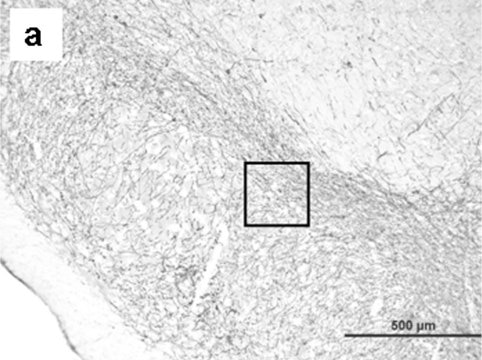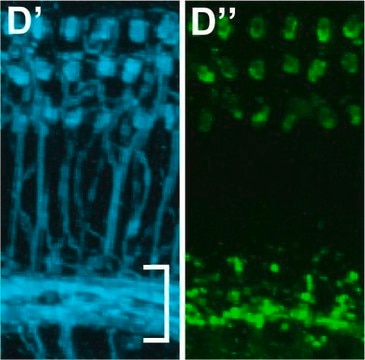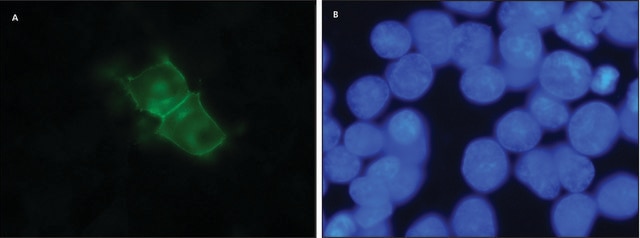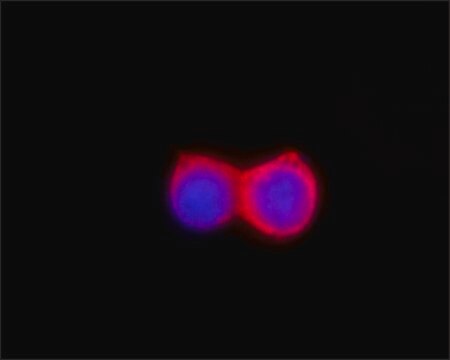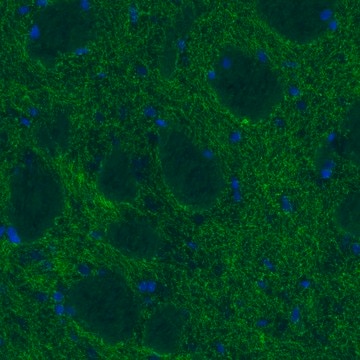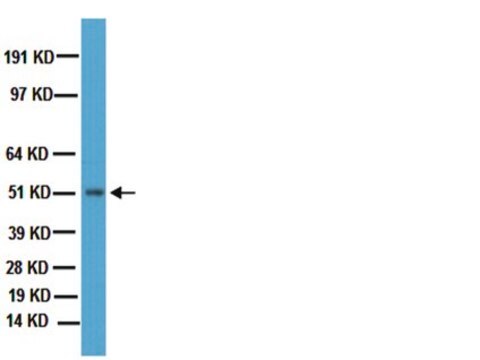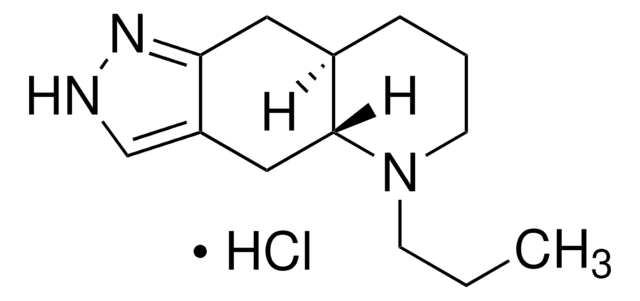MAB369
Anti-Dopamine Transporter Antibody, NT, clone DAT-Nt
culture supernatant, clone DAT-Nt, Chemicon®
Synonym(s):
DAT
About This Item
Recommended Products
biological source
rat
Quality Level
antibody form
culture supernatant
antibody product type
primary antibodies
clone
DAT-Nt, monoclonal
species reactivity
rat, human, mouse, monkey
manufacturer/tradename
Chemicon®
technique(s)
immunocytochemistry: suitable
immunohistochemistry: suitable
western blot: suitable
isotype
IgG2aκ
NCBI accession no.
UniProt accession no.
shipped in
dry ice
target post-translational modification
unmodified
Gene Information
human ... SLC6A3(6531)
General description
Specificity
Immunogen
Application
Neuroscience
Ion Channels & Transporters
Immunohistochemistry: 4% paraformaldehyde fixed tissue (care should be taken not to over-fix tissue); perfusion followed by less than 90 minutes post-fixation, then cryoprotect. Suggested working dilution 1:1,000-1:10,000. If using on rat tissue, absorbed anti-rat secondary antibodies are recommended, and the use of rat PAP systems, or ABC detection will enhance sensitivity.
Immunocytochemistry: 1:5,000 to 1:10,000.
Immunoblotting (not recommended for use on rat)
Optimal working dilutions and protocols must be determined by end user.
IMMUNOHISTOCHEMISTRY PROTOCOL FOR MAB369
This antibody has been used successfully on 30 μm, free floating, 4% paraformaldehyde fixed mouse brain tissue. All steps are performed under constant agitation. Suggested protocol follows.
1) 3 x 10 minute washes in TBS (with or without 0.25% Triton).
2) Incubate for 30 minutes in TBS with 3% serum (same as host from secondary antibody).
3) Incubate primary antibody diluted appropriately in TBS with 1% serum (same as host from secondary antibody) (with or without 0.25% Triton) for 2 hours at room temperature followed by 16 hours at 4°C.
4) 3 x 10 minute washes in TBS.
5) Incubate with secondary antibody diluted appropriately in TBS with 1% serum (same as host from secondary antibody).
6) 3 x 10 minute washes in TBS.
7) ABC Elite (1:200 Vector Labs) in TBS.
8) 2 x 10 minute washes in TBS.
9) 1 x 10 minute wash in phosphate buffer (no saline).
10) DAB reaction with 0.06% NiCl added for intensification.
11) 2 x 10 minute washes in PBS.
12) 1 x 10 minute wash in phosphate buffer (no saline).
Target description
Physical form
Storage and Stability
Analysis Note
Positive Control: Brain (caudate, putamen, and nucleus accumbens) tissue
Legal Information
Disclaimer
Still not finding the right product?
Give our Product Selector Tool a try.
recommended
Storage Class
10 - Combustible liquids
wgk_germany
WGK 1
flash_point_f
Not applicable
flash_point_c
Not applicable
Certificates of Analysis (COA)
Search for Certificates of Analysis (COA) by entering the products Lot/Batch Number. Lot and Batch Numbers can be found on a product’s label following the words ‘Lot’ or ‘Batch’.
Already Own This Product?
Find documentation for the products that you have recently purchased in the Document Library.
Customers Also Viewed
Our team of scientists has experience in all areas of research including Life Science, Material Science, Chemical Synthesis, Chromatography, Analytical and many others.
Contact Technical Service